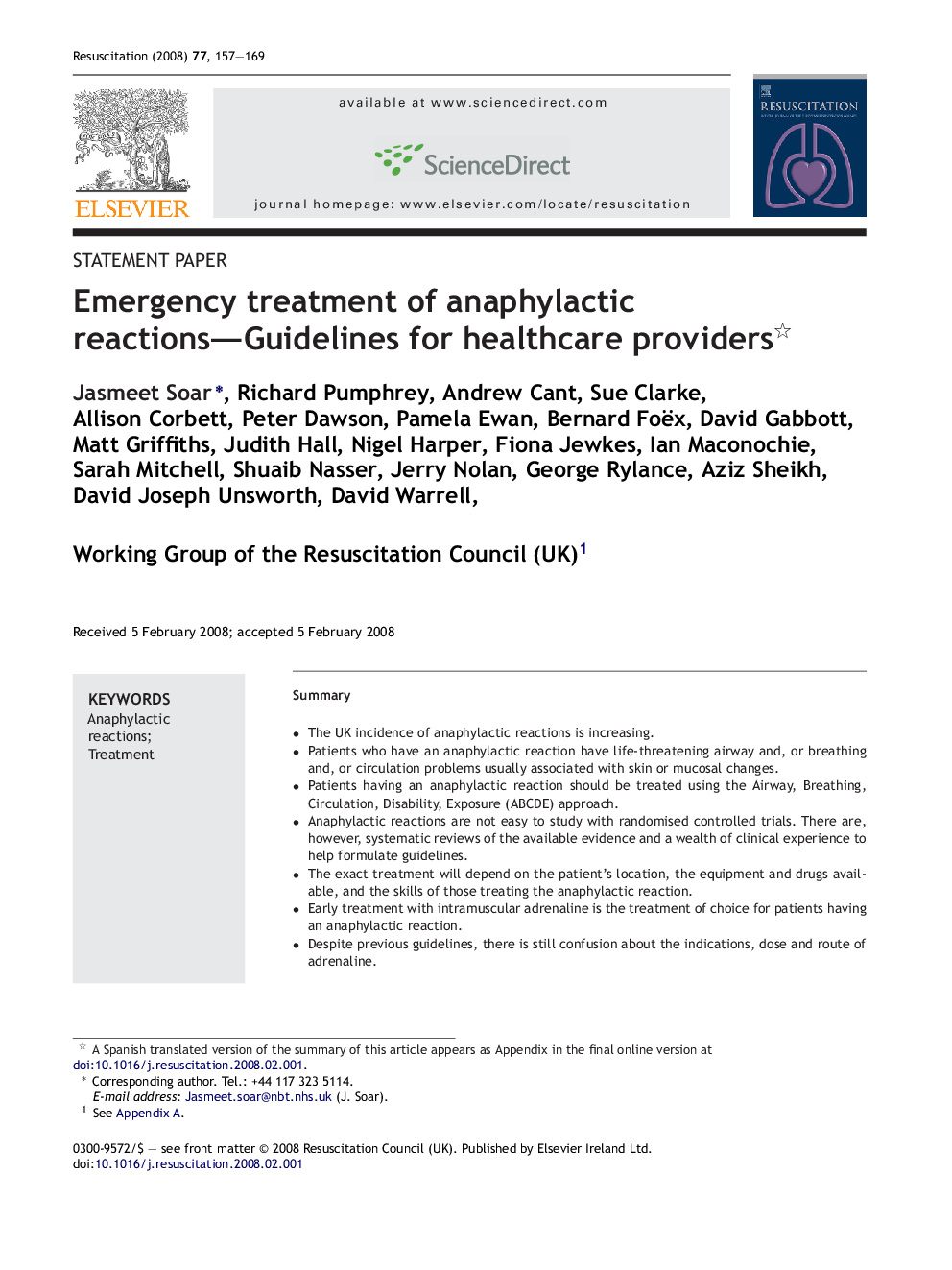| Article ID | Journal | Published Year | Pages | File Type |
|---|---|---|---|---|
| 3010524 | Resuscitation | 2008 | 13 Pages |
Summary•The UK incidence of anaphylactic reactions is increasing.•Patients who have an anaphylactic reaction have life-threatening airway and, or breathing and, or circulation problems usually associated with skin or mucosal changes.•Patients having an anaphylactic reaction should be treated using the Airway, Breathing, Circulation, Disability, Exposure (ABCDE) approach.•Anaphylactic reactions are not easy to study with randomised controlled trials. There are, however, systematic reviews of the available evidence and a wealth of clinical experience to help formulate guidelines.•The exact treatment will depend on the patient's location, the equipment and drugs available, and the skills of those treating the anaphylactic reaction.•Early treatment with intramuscular adrenaline is the treatment of choice for patients having an anaphylactic reaction.•Despite previous guidelines, there is still confusion about the indications, dose and route of adrenaline.•Intravenous adrenaline must only be used in certain specialist settings and only by those skilled and experienced in its use.•All those who are suspected of having had an anaphylactic reaction should be referred to a specialist in allergy.•Individuals who are at high risk of an anaphylactic reaction should carry an adrenaline auto-injector and receive training and support in its use.•There is a need for further research about the diagnosis, treatment and prevention of anaphylactic reactions.
